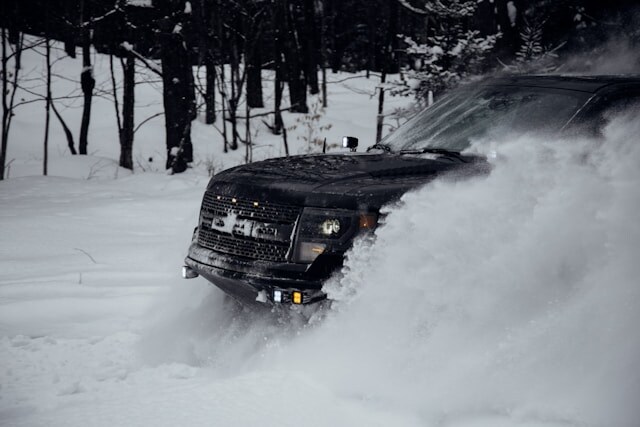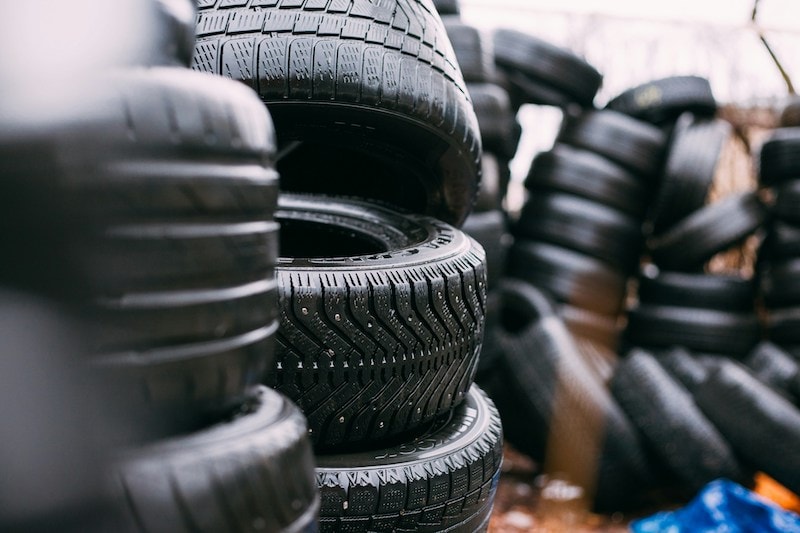
Missouri Snow Chains & Tire Studs: Legality & Tips
Studded Snow Tires vs. Chains for Missouri Winters
Contact
Studded Snow Tires vs. Chains for Missouri Winters
As eluded to above, chains are considered an alternative for specialized tires with studs. Both are designed to provide extra traction not provided by ordinary tires. Non-studded snow tires are the most versatile of all your options and, once applied, require minimal work. Whether you're traveling across ice or pavement, you'll receive a safe ride. However, these are more expensive than some of the other options and don't perform as well in deep snow.

How to Apply Snow Chains
You may have to practice this a few times before becoming fully comfortable with the process. It's best to try this out before the temperatures dip; no one wants to learn a new skill while shivering in the middle of a blizzard. Your specific set of tire chains should come with their own instructions. However, generally speaking, the process starts by removing any twists from the chain. Face your tires straight ahead and, with your vehicle turned off, drape the chain on top of the tire so it's centered. Drive ahead only an inch or two, as the chain needs to remain on the tire. This will enable you to fasten the ends to completely encircle the tire, and make sure you do so as tightly as possible. For a visual representation of each step, click here.
What About Studded Tires? Are They Needed in Missouri?
Important to note that, in Missouri, it's illegal to have studded snow tires any day sooner than November 1st or after March 31st.
So, what are they anyhow? Studded tires are exactly how they sound; tiny spikes are spread out across the exterior. They assist with grip while simultaneously breaking the ice.
When weighing the differences between studded tires and snow chains and determining which are better for Missouri winters, consider the following:
- Studded tires are the more expensive of the two. This not only applies to the parts themselves but also the cost of professional installation.
- Studded tires are intended only for very specific conditions in which snow and ice are piled high. Drive it over dry road conditions, and they can be quite damaging.
- Missouri winters can be quite fickle. Unlike more northern states like Minnesota and Alaska where snow is more consistent, conditions can change from week-to-week.
Other Ways to Stay Safe When Driving Through Missouri Winters
Missouri is beautiful year-round, winter included. Ice and snow make our countryside glisten and our cities tranquil. Whether you're commuting to work, visiting family for the holidays, or venturing out for a wintertime adventure, snow chains can play a crucial role in keeping you safe. However, they aren't the only measures you should prepare to take:- Keep emergency cold-weather items in case you're stranded. Whether it's because you swerve into a ditch to avoid a deer or your vehicle gives out, becoming stranded in winter is entirely possible. For this reason, always keep extra blankets, food, water, and a flashlight in your backseat.
- Pay extra close attention to your tires. Even if you opt to forego snow tires or chains, you need to pay extra attention to your tires throughout the cold Missouri winters. Air pressure will naturally decrease in lower temperatures. This leads to worsened fuel efficiency and can potentially compromise the quality of the tire. Check tire pressure on a regular basis throughout the winter and, when necessary, swing by your local air pump. If you suspect that your tread is worn, winter is the time to upgrade your tires to further prevent sliding on slick roads.
- Change your oil and antifreeze if you haven't already. It's always a good idea to change your antifreeze and oil no matter the time of year. However, this is especially true when temperatures drop. Antifreeze helps moderate the temperature of your engine's fluids while preventing rust. If you're unsure whether you need to flush your existing antifreeze and replenish it with a new supply, simply look inside the overflow tank. If the color is brownish, it's time to replace your antifreeze. However, if the fluid retains its bright color, you won't need to apply new antifreeze just yet.
- Ensure your battery is ready for the cold. Is there anything worse than a car that refuses to start in the dead of winter? Cold weather naturally makes your battery less responsive, so make sure that yours isn't on its last legs. Bo Beuckman Quality Ford or another service center can perform a quick test and tell you whether or not it's time for a replacement. To fend off the effects of the cold, store your car in a garage when possible. Driving it at least once a day will help the engine to warm the battery.
- If you're not used to maneuvering in snow, consider brushing up on your skills with a driving class. Driving in Missouri snow is no joke, regardless of whether you use chains or studded tires. Learn how to conquer icy conditions with confidence by taking a course at one of the top driving schools in the St. Louis area.